Manufacturers of All Types of Steel Valves – 100% Leak Proof & Tested Valves | Stainless Steel Valves, Carbon Steel Valves, Nickel Alloy Valve Suppliers in India
| Needle & Guage Valve (Rising Stem – Multi Turn Valve) | Solenoid Valve (Fast Acting – On/Off Valve) |
| Globe Valve (Rising Stem – Multi Turn Valve) | Coaxial Valve (Fast Acting – On/Off Valve) |
| Gate Valve (Rising Stem – Multi Turn Valve) | Angle Seat Valve (Fast Acting – On/Off Valve) |
| Plug valve (Rotary Valve) | Diaphragm Valve |
| Ball Valve (Rotary Valve) | Knife Gate Valve |
| Butterfly Valve (Rotary Valve) | Parallel Slide Valve |
| Check Valve | Sluice Valve |
| Pinch Valve | Piston Valve |
| Pressure Relief Valve | Manifold Valve |
- We are manufacturers of all types of steel valves in sizes range of 1/4″ through 2″ in straight and angle type. Steel valves are made from a variety of materials. Our manufacturing range for steel valves include valves produced from brass, copper, stainless steel 304/304L, 316L, Duplex, Titanium, Alloy 600, Alloy 400, Alloy 625, Alloy 825, and Alloy C276.
- A valve is a device that regulates, directs or controls the flow of a fluid (gases, liquids, fluidized solids, or slurries) by opening, closing, or partially obstructing various passageways. Valves are technically fittings, but are usually discussed as a separate category. In an open valve, fluid flows in a direction from higher pressure to lower pressure. Valves are essential components of a piping system that conveys liquids, gases, vapors, slurries etc.
- Valves are manufactured from a variety of materials. Our manufacturing range for valves include valves produced from low carbon steel, middle carbon steel, alloy steel, brass, copper, stainless steel, Duplex, Super Duplex, Titanium, Alloy 600, Alloy 400, Alloy 600, Alloy 625, Alloy 825, and Alloy C276. To meet various requirements for corrosion resistant or strength, we can offer valves with further treatment such as heating, black oxide, zinc coating, hot dipper galvanizing, black zinc coating, brass coating, nickel and chrome plating, etc.
- We are manufacturing valves by following a stringent quality control program and standards which assure good surface and close dimensional tolerances. We are a global industry leading provider of carbon steel, alloy steel and stainless steel valves and have obtained ASME Quality and ISO 9001:2015 Certifications.
- All our valves and other products are supplied with 3.1 specific test certificates, according to EN 10204. Certification according to 3.2 can be agreed at the time of ordering. Metallica makes it easy for you to source top quality valves at the lowest prices.
- Our complete product range of instrumentation valves and tube fittings include Pressure Gauge, Snubbers, Gauge Cock Gate, Globe, Check, Butterfly, Ball Valves, Diaphragm Valve, Needle Valves, Syphon ( Q Type, U Type, O Type) and Pipe Fittings.
Valves Specifications, Stock & Production Range
| Product | Valves |
| Material | Stainless Steel Valves, Carbon Steel Valves, Alloy Steel Valves |
| Standards | API 598/BS EN 12266-1, ASME B 16.10, API 600/BS1414, 1/8 to 1”, ASME B 16.34, ASME B 16.5,ASME B 16.25 |
| Sizes | Sizes available on request, 1/8 to 1” |
| Working Pressure | Valves are also available which could handle higher pressure, Up to 6000 PSIG |
| End Connection | BSPT, Male and Female NPT, Male to Female, Socket Weld (SW) or Dual Ferrule Tube Connections, Female to Female |
| Temperature Rating | (232C)/Grafoil 700 F(371C),PTFE 450F |
| Pressure rating | 150#,300#,600#,800#,1500# |
| Operating Mechanisms | Outside Screw & Yoke, Rising Stem, Non Rising Stem |
- Email Us on info@metallicametals.com for best prices on various types of Carbon Steel Valves, Stainless Steel Valves, Duplex Valves, Super Duplex Valves, Nickel Valves, Inconel Valves, Monel Valves, Incoloy Valves, Hastelloy Valves, and Titanium Valves.
Manufacturing Process of Valves
Valves are generally manufactured by two processes namely forging or casting. All valves are indispensable parts of any industrial system, but not all valves are created in the same way. For example, some valves are forged and other valves are cast. Forging and casting are two of the most common ways to create high-quality valves. The biggest difference between forging vs casting valve methods is how they’re carried out. For both forged and cast valves the process begins with molten metal being poured into a mould. Shrinkage is a defect commonly shared by castings and forgings.
Forged valves are created using a forging method that involves shaping metals and alloys while they’re in their solid form. Heat and industrial-size tools deliver compressive forces to bend the metals and alloys, and dies are used to cut and shape the materials to create specific valves. Forging can be performed in most temperatures depending on the metals used.
- Companies don’t have to worry about wasted materials. Since forged valves are shaped into one solid piece, little effort is needed to rework the material to achieve the proper shape and size.
- Forged valves have a reputation for being strong, which make them ideal for handling high-pressure and high-temperature systems.
- Increase in impact and overall strength.
- Forging can create valves with less wall thickness.
- Forged valves can be heated and cooled more quickly, which allows them to adequately handle the stresses of systems that continuously cycle through start-up and phase-down processes.
- Forging boosts its resistance to common issues such as cracks, shrinkage, and porosity.
Unlike forging, Casting uses the liquid form of metal to create valves. These metals are melted into a molten liquid and poured into various molds. Once the liquid cools and solidifies, it’s broken out of or ejected from the mold.
- It can create valves with complex shapes, patterns, and sizes with more intricate parts.
- Great cost-effective solution for many companies. It allows you to make valves using more types of metals and alloys.
- Casting valves provides an easier and less time-consuming way to make replacement parts when a system’s current valves break down and deteriorate.
- It doesn’t require as much labor as forging valves, casting helps to reduce machining costs, especially when creating valves of complex shapes.
| Material Group | Forged Grade | Equivalent Cast Grade |
| Carbon Steel | A181-Gr.1 A181-Gr.2 | |
| Moderate, high temp. service | A105-Gr.1 A105-Gr.2 | A216-WCA WCB WCC |
| Cold temp. service | A350-LF1 A350-LF2 | A352-LCB, LCC |
| Carbon -1/2 Moly Alloy Steel | ||
| High Temp Service | A182-F1 | A217-WC1 |
| Cold Temp Service | A352-LC1 | |
| 1/2Cr-1/2Mo Alloy Steel | A182-F2 | |
| 1/2Cr-1/2Mo-1 Alloy Steel | A217-WC4 | |
| 3/4Cr-1 Mo-3/4NI Alloy Steel | A217-WC5 | |
| 1Cr-1/2Mo Alloy Steel | A182-F12 | |
| 1Cr-1 Mo-Vd Alloy Steel | A404-F24 | A389-C24 |
| 1-1/4Cr-1/2Mo Alloy Steel | A182-F11 | A217-WC6 |
| 1-1/4Cr-1/2Mo-Vd Alloy Steel | A389-C23 | |
| 2-1/4Cr-1/2Mo-Vd Alloy Steel | A182-F22 | A217-WC9 |
| 3Cr-1 Mo Alloy Steel | A182-F21 | |
| 5Cr-1/2Mo Alloy Steel | A182-F5 | |
| 5Cr-1/2Mo-Si Alloy Steel | A217-Gr.C5 | |
| 7Cr-1/2Mo Alloy Steel | A182-F7 | |
| 9Cr-1 Mo Alloy Steel | A182-F9 | A217-Gr.C12 |
| 13Cr Alloy Steel | A182-F6 | A351-CA15 |
| Type 304 Stainless Steel | ||
| Standard | A182-F304 | A351-Gr.CF8 CF8a |
| Low Carbon | A182-F304-L | A351-Gr.CF3 CF3a |
| High Temp Service | A182-F304-H | A351.Gr.CF10 |
| Type 309 Stainless Steel | ||
| Type 310 Stainless Steel | A182-F310 | |
| Type 316 Stainless Steel | ||
| Standard | A182-F316 | A351-Gr.CF8M |
| Low Carbon | A182-F316-L | A351-Gr.CF3M |
| High Temp Service | A182-F316-H | A351.Gr.CF10 |
| Type 317 Stainless Steel | A403-WP317 | |
| Type 321 Stainless Steel | ||
| Standard | A182-F321 | |
| High Temp Service | A182-F321-H | |
| Type 347 Stainless Steel | ||
| Standard | A182-F347 | |
| High Temp Service | A182-F347-H | A351-Gr.CF8C |
| Type 348 Stainless Steel | ||
| Standard | A182-F348 | |
| High Temp Service | A182-F348-H | |
| 20 Ni-8 Cr Alloy | A182-F10 | |
| 2 Nickel Alloy Steel | ||
| Low Temp Service | A352-LC2 |
Types of Valves
Each type of valve serves a very distinct purpose. Such valves are used in a number of industries around the world, including water management, chemical processing, and food production. Valves are quite diverse and may be classified into a number of basic types.
Valves can also be classified based on their functions:-
- Function
- End connection
- How it operates
- Types of Actuator it used.
Classification of Valves based on end connections:-
- Wafer and Lug end construction
- Screwed or threaded
- Flanged type ends
Classification of Valves based on actuator:-
The last way to classify the valve is, types of the actuator used to transfer the motion to operate the valve. The valve can be operated manually with the help of handwheel, lever, chain or by a gear wheel. An external power source such as an electric motor, air, hydraulic fluid or solenoid is used to operate valve from the control room. Check valve works automatically when subjected to the backflow.
- Hydraulic
- Pneumatic
- Manual
- Solenoid valve
- Motor
Classification of Valves based on mechanical motion:-
- Linear Motion Valves
- Rotary Motion Valves
- Quarter Turn Valves

Types of Valve, Butterfly Valve, Pressure Relief Valve, Ball Valve, Gate Valve, Check Valve, Globe Valve, Control Valve, Plug Valve, Diaphragm Valve, Needle Valve
Types Of Valves:
- Check Valve:- Check valves are commonly used for the prevention of back flow into a pipeline.
- Plug Valve:- A plug shaped valve that uses a tapered or cylindrical plug to stop or start the flow. Plug valve is Quarter-turn rotary motion Valve. Plug valve can be used in vacuum to high-pressure & temperature applications
- Pressure Relief Valve:- Pressure Relief Valve also known as Pressure Safety Valve are used to protect equipment or piping system during an over pressure event or in the event of vacuum. This valve releases the pressure or vacuum at pre-defined set pressure.
- Gate Valve:- A stainless steel gate valve functions as an on/off valve. The gate or disc located inside the value is raised and then lowered while a handle is turned. Such valves are not ideally suited for regulating flow, and using them in that manner could result in damage to the disc mechanism. Two styles of gate valves are available: rising stem and non-rising stem. Gate valves are used in almost all fluid services such as air, fuel gas, feed water, steam, lube oil, hydrocarbon, and all most any services.
- Knife Valve:- Knife valves are actually similar in nature to gate valves. The main difference is that a knife valve is more compact than a gate valve.
- Butterfly Valve:- Butterfly valve is a quarter-turn rotary motion valve, used to stop, regulate, and start the flow.
- Ball Valve:- Ball valves are typically used as a type of on/off control without incurring a drop in pressure. These types of valves are ideally suited for situations requiring a quick shut-off. A 90-degree turn can complete a shut-off with this valve, as opposed to the multiple turns that would typically be necessary for manual valves.
- Disc Check Valve:- Disc check valves, also called as non-return valves allow the flow to pass through them in only one direction and stop the flow in reverse direction. Because of this unique directional property, disc check valves are essentially used for some critical applications in the steam systems. There are 4 major types:-
- Diaphragm Valve:- In situations in which flow needs to be controlled with the movement of a diaphragm, a diaphragm valve is commonly used.
- Lift Check Valve:- Lift check valves work simply on the principle of gravity.
- Swing Check Valve:- In this kind of check valve, the disc or the closing element swings around a point to which it is hinged.
- Spring loaded Check Valve:- In this kind of check valves, tight shut-off it provided using a spring.
- Globe Valve:- Globe valve is used to stop, start, and regulate the fluid flow. Globe Valves are used in the systems where flow control is required and leak tightness is also necessary. Globe valve provides better shut off as compared to gate valve and it is costlier than gate valve.
- Needle Valve:- Needle valves are similar to a globe valve in design with the biggest difference that is the sharp-pointed conical disc and matching seat. Needle valves are designed to give very accurate control of flow in small diameter piping systems.
- Pinch Valve:- Pinch valves consist of a plastic tube/sleeve which is made up of reinforced elastomers. The sealing/ closing action is achieved by throttling or pinching this sleeve/tube. Pinch valves are best suited for handling slurries and fluids having suspended solids. Pinch valves offer many benefits over the other types of valves. They can be used for handling corrosive fluids as there is no contact between the fluid carried and the actual valve mechanism. Generally, pinch valves are suitable for low pressure applications. When used with abrasive slurries, they should be used as on-off valves; if used for throttling purposes, the sleeve will get worn out.

Components of Valves
The main parts of the most usual type of valve are the body and the bonnet. These two parts form the casing that holds the fluid going through the valve.
Cross-sectional diagram of an open globe valve.
1. body
2. ports
3. seat
4. stem
5. disc when valve is open
6. handle or handwheel when valve is open
7. bonnet
8. packing
9. gland nut
10. fluid flow when valve is open
11. position of disc if valve were shut
12. position of handle or handwheel if valve were shut
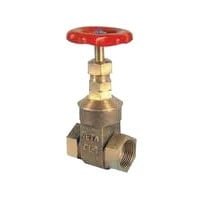
Gate Valve (Rising Stem – Multi Turn Valve)

Globe Valve (Rising Stem – Multi Turn Valve)
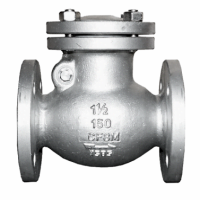
Check Valve

Plug valve (Rotary Valve)
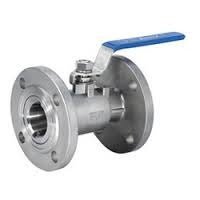
Ball Valve (Rotary Valve)

Butterfly Valve (Rotary Valve)
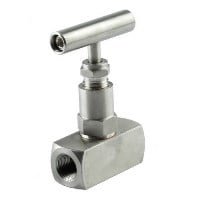
Needle Valve (Rising Stem – Multi Turn Valve)

Pinch Valve
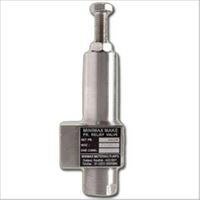
Pressure Relief Valve

Solenoid Valve (Fast Acting – On/Off Valve)
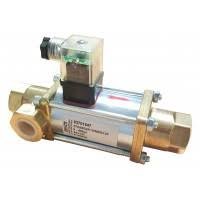
Coaxial Valve (Fast Acting – On/Off Valve)
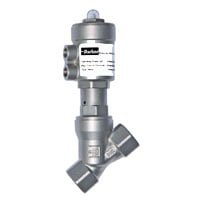
Angle Seat Valve (Fast Acting – On/Off Valve)

Diaphragm Valve
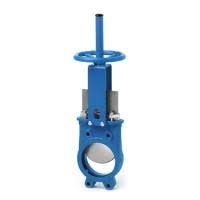
Knife Gate Valve
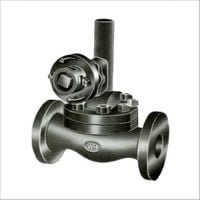
Parallel Slide Valve
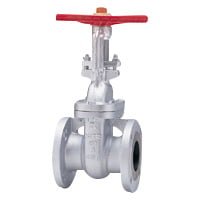
Sluice Valve

Piston Valve
Functions of Valves
- Stopping and starting a fluid flow
- Relieve pressure or create vacuum in the piping system
- Regulating a flow or pressure within the piping system
- Throttling the fluid flow
- Controlling the direction of a fluid flow
Advantages of Valves
- While plastic valves are also not prone to rust or corrosion, they do not have the strength, durability, or resistance to high pressure that stainless steel valves have. Stainless steel valves are designed with a hydraulic system that prevents all leaks.
- Robustness
- Corrosion-Free
- Resistance Against High-Pressure
- Variety of Designs
- Leakage Proof
Disadvantages of Valves
Gate Valve:
• Gate valves cannot be opened & closed quickly
• They cause vibrations
• In systems where high-temperature changes irregularly, due to the load in pipe at the valve end, leakages in gate valves occur.
• The operation, maintenance, and repair of gate valves seating surfaces are complex.
Globe Valve:
• Pressure loss is higher
• To close under high pressure, globe valves require a larger amount of force or an actuator with a large torque.
Ball Valve:
• Ball valves are not suitable for permanent throttling.
• In residual fluids, the particles in the fluid collide with the surfaces and stick to them. This may cause leakage, abrasion, and other problems.
Butterfly Valve:
• Butterfly valves have no tight shut offs
• Some portion of the disc is always presented to the flow, even when fully opened. This may result in a pressure switch across the valve, regardless of the setting.
Check Valve:
• They cannot be used with pulsating systems
• Closing element may crash causing damage and excessive wear
Selection Criteria of Materials for Valves
| Material | Material Code |
| Austenitic Stainless Steel | CN7M, CN3MN |
| Precipitation Hardening Stainless Steel | 17-4PH, 15-5PH |
| Duplex Stainless Steel | CD4MCu, CD3MN, CE3MN, Alloy2205, Ferralium255, SAF2507, ASTM A890 |
| Monel | Monel400 |
| Hastelloy | Hastelloy C276, Hastelloy B2, CW2M, CW12MW |
| Inconel | Inconel 600 |
Selection Criteria for Valves
1. Fabrication:- Will the component be machined, forged, cold formed or welded? The fabrication required should be considered from three perspectives: (a) How easy or difficult will it be to fabricate the component? (b) How will fabrication affect the alloy’s performance? (c) Will the quality of the alloy permit satisfactory fabrication?
2. Physical Properties:- These could include density or magnetic properties.
3. Corrosion Resistance:- Be sure to consider the environment and type of corrosion resistance to be encountered. The most cost effective stainless steel will have enough corrosion resistance to provide the required service life without the needless expense of over-alloying.
4. Mechanical Properties:- Strength is usually the most important mechanical property in the selection of a stainless steel. However, the designer may be concerned also with the alloy’s hardness, ductility, impact resistance, fatigue strength or stress rupture resistance – or, perhaps more than one of these properties. Furthermore, the potential effect of the desired mechanical property on the alloy’s corrosion resistance may be important.
5. Final Component Cost:- Do a thorough value analysis that includes the initial alloy price, the installed cost, and the effective life expectancy of the finished product.
Applications of Valves
Valves have many uses, including controlling water for irrigation, industrial uses for controlling processes, residential uses such as on/off and pressure control to dish and clothes washers and taps in the home. Even aerosols have a tiny valve built in. Valves are also used in the military and transport sectors. In HVAC ductwork and other near-atmospheric air flows, valves are instead called dampers. In compressed air systems, however, valves are used with the most common type being ball valves. Valves are found in virtually every industrial process, including water and sewage processing, mining, power generation, processing of oil, gas and petroleum, food manufacturing, chemical and plastic manufacturing and many other fields.
Valves may be operated manually, either by a handle, lever, pedal or wheel. Valves may also be automatic, driven by changes in pressure, temperature, or flow. These changes may act upon a diaphragm or a piston which in turn activates the valve, examples of this type of valve found commonly are safety valves fitted to hot water systems or boilers. More complex control systems using valves requiring automatic control based on an external input (i.e., regulating flow through a pipe to a changing set point) require an actuator. An actuator will stroke the valve depending on its input and set-up, allowing the valve to be positioned accurately, and allowing control over a variety of requirements.
Stainless Steel Valves
- Stainless Steel 304/304L Valves
- Stainless Steel 304H U Valves
- Stainless Steel 310/310S Valves
- Stainless Steel 316/316L Valves
- Stainless Steel 316Ti Valves
- Stainless Steel 317/317L Valves
- Stainless Steel 321/321H Valves
- Stainless Steel 347 Valves
- Stainless Steel 347H Valves
- Stainless Steel 410 Valves
- Stainless Steel 446 Valves
- Stainless Steel 904L Valves
Alloy Steel Valves
- Alloy Steel B6 Valves
- Alloy Steel B7 Valves
- Alloy Steel B7M Valves
- Alloy Steel B16 Valves
- Alloy Steel 2 Valves
- Alloy Steel 2HM Valves
- Alloy Steel 2H Valves
- Alloy Steel GR 6 Valves
- Alloy Steel GR 7 Valves
- Alloy Steel GR 7M Valves
Hastelloy Valves
- Hastelloy C22 Valves
- Hastelloy C276 Valves
- Hastelloy B2 Valves
- Hastelloy B3 Valves
- Hastelloy X Valves
Nickel Valves
- Nickel 200 Valves
- Nickel 201 Valves
Special Alloy Valves
- Alloy 20 Valves
- SMO 254 Valves
- AISI 4130 Valves
- Aluminium Valves
- Alloy A286 Valves
- 17-4ph Valves
- Aluminium Valves
Duplex Steel Valves
- Duplex Steel S31803 / S32205 Valves
- Super Duplex Steel S32750/ S32760 Valves
Titanium Valves
- Titanium Gr 2 Valves
- Titanium Gr 5 Valves
Inconel Valves
- Inconel 600 Valves
- Inconel 601 Valves
- Inconel 625 Valves
- Inconel 718 Valves
Incoloy Valves
- Incoloy 800 / 800H / 800HT Valves
- Incoloy 825 Valves
- Incoloy 925 Valves
- Incoloy 330/ SS 330/ Ra 330 Valves
Monel Valves
- Monel 400 Valves
- Monel K500 Valves
Cupro Nickel Valves
- Cupro Nickel 90 / 10 Valves
- Cupro Nickel 70 / 30 Valves
- Copper Valves
- Brass Valves
Carbon Steel Valves
- Low Carbon Steel Valves
- Middle Carbon Steel Valves
- High Carbon Valves
- High Strength Valves
Testing & Inspection of Valves
Testing (Destructive, Non Destructive)
| Positive Material Identification – PMI Testing | Hydrostatic Test |
| Chemical Analysis – Spectro Analysis | Hydrogen-Induced Cracking (HIC) Test |
| Mechanical Testing Such as Tensile, Elongation, Reduction of Area | Sulfide Stress Corrosion Cracking (SSC), NACE TM 0177 |
| Micro Test | Radiography Test |
| Macro Test | Dye Penetrant Test (DP Test) |
| Hardness Test | Ultra Sonic Test (UT) |
| Pitting Resistance Test | Eddy Current Testing |
| Intergranular Corrosion (IGC) Test | Impact Test |
| Flaring Test | Bend Test |
| Flattening Test |
Inspection
- Our internal inspection reports would be provided for all the goods before shipment.
- Buyers or their associates are most welcome to visit us for personal inspect
- We regularly have inspections ongoing at our premises from internationally acclaimed Inspection Agencies such as TUV, BVIS, SGS, Llyods, DNV etc.
Prices for Valve
Prices for valves are directly co related to prices of the raw materials such as iron ore, metal scrap, chromium, nickel and various other alloying elements. The production cost of heat resistant stainless steel and nickel alloy valve is high as they contain high amount of nickel and chromium. Meanwhile, mild steel material is among the lowest cost steel available, followed by carbon steel, 400 series stainless steels, aluminium, alloy steel, and 300 series stainless steel. Special alloys such as titanium, Inconel, Monel and Hastelloy cost very high as the nickel, chromium and moly content is very high.
For special and discounted prices for various types of valve products, please feel free to contact us through email, phone or whatsapp.
We are also regularly publishing our price list for various steel products on our blog.
Documents Provided – Domestic Sales or Export of Valves
| Certificate of Origin | Raw Material Test Reports |
| Commercial Invoice | Heat Treatment Charts |
| Packing List | Quality Assurance Plan (QAP) |
| Fumigation Certificates | NABL approved Laboratory Test Reports |
| Letter of Guarantee | Material Test Certificates |
| ROHS Certificate | Certificate of Compliance/Conformity |
Price Terms for Valves
We can offer any of the following price basis depending on your requirement:
- Ex-works
- FOR Site in India
- FOB Nhava Sheva
- CFR, CIF, CPT your destination port
- Door to Door Delivery Duty Paid as well as Duty Unpaid
Delivery Time of Valves
- If the items are available in stock, we take 2 days from the date of receipt of advance payment to clear the shipment and send it to port.
- And in-case the items are not available in stock, the time taken for manufacturing depends on the size, quantity and grade.
- However we can claim the fact that we can compete with anyone in India on Delivery time and most of the time our production time is the least.
- We have tied up with strong logistic partners in India which can undertake any type of shipping activities and make sure that there is no delay in shipment.
Marking & Packing of Valves
- All our products will have complete marking details which are co-related to the test certificates we supply.
- In case of orders for cut piece of Pipes, Sheets or Round Bars, the marking is transferred from the product from which it is cut. In such cases we provide Letter confirming the marking transfer and picture of the product from which it is cut.
- All goods are packed in wooden cases or pallets.
Suppliers of Valves in India
Mumbai, Delhi, Bangalore, Hyderabad, Ahmedabad, Chennai, Kolkata, Surat, Pune, Jaipur, Visakhapatnam, Kanpur, Nagpur, Lucknow, Thane, Bhopal, Indore, Pimpri Chinchwad, Patna, Vadodara, Ghaziabad, Ludhiana, Agra, Nashik, Faridabad, Meerut, Rajkot, Kalyan-Dombivli, Vasai-Virar, Varanasi, Srinagar, Aurangabad, Dhanbad, Amritsar, Navi Mumbai, Allahabad, Howrah, Ranchi, Gwalior, Jabalpur, Coimbatore, Vijayawada, Jodhpur, Madurai, Raipur, Chandigarh, Guntur, Guwahati, Solapur, Hubli–Dharwad, Mysore, Tiruchirappalli, Bareilly, Moradabad, Tiruppur, Gurgaon, Aligarh, Jalandhar, Bhubaneswar, Salem, Mira-Bhayandar, Warangal, Jalgaon, Kota, Bhiwandi, Saharanpur, Gorakhpur, Bikaner, Amravati, Noida, Jamshedpur, Bhilai, Cuttack, Firozabad, Kochi, Nellore, Bhavnagar, Dehradun, Durgapur, Asansol, Rourkela, Nanded, Kolhapur, Ajmer, Akola, Gulbarga, Jamnagar, Ujjain, Loni, Siliguri, Jhansi, Ulhasnagar, Jammu, Sangli-Miraj & Kupwad, Mangalore, Erode, Belgaum, Ambattur, Tirunelveli, Malegaon, Gaya, Thiruvananthapuram, Udaipur, Kakinada, Davanagere, Kozhikode, Maheshtala, Rajpur, Sonarpur, Rajahmundry, Bokaro, South Dumdum, Bellary, Patiala, Gopalpur, Agartala, Bhagalpur, Muzaffarnagar, Bhatpara, Panihati, Latur, Dhule, Tirupati, Rohtak, Sagar, Korba, Bhilwara, Berhampur, Muzaffarpur, Ahmednagar, Mathura, Kollam, Avadi, Kadapa, Kamarhati, Sambalpur, Bilaspur, Shahjahanpur, Satara, Bijapur, Kurnool, Rampur, Shimoga, Chandrapur, Junagadh, Thrissur, Alwar, Bardhaman, Kulti, Nizamabad, Parbhani, Tumkur, Khammam, Ozhukarai, Bihar Sharif, Panipat, Darbhanga, Bally, Aizawl, Dewas, Ichalkaranji, Karnal, Bathinda, Jalna, Eluru, Barasat, Kirari Suleman Nagar, Purnia, Satna, Mau, Sonipat, Farrukhabad, Durg, Imphal, Ratlam, Hapur, Arrah, Anantapur, Karimnagar, Etawah, Ambarnath, North Dumdum, Bharatpur, Begusarai, New Delhi, Gandhidham, Baranagar, Tiruvottiyur, Pondicherry, Sikar, Thoothukudi, Rewa, Mirzapur, Raichur, Pali, Ramagundam, Haridwar, Vijayanagaram, Tenali, Nagercoil, Sri Ganganagar, Karawal Nagar, Mango, Thanjavur, Bulandshahr, Uluberia, Katni, Sambhal, Singrauli, Nadiad, Secunderabad, Naihati, Yamunanagar, Bidhannagar, Pallavaram, Bidar, Munger, Panchkula, Burhanpur, Raurkela Industrial Township, Kharagpur, Dindigul, Gandhinagar, Hospet, Nangloi Jat, Malda, Ongole, Deoghar, Chapra, Haldia, Khandwa, Nandyal, Morena, Amroha, Anand, Bhind, Bhalswa Jahangir Pur, Madhyamgram, Bhiwani, Berhampore, Ambala, Morbi, Fatehpur, Raebareli, Mahaboobnagar, Chittoor, Bhusawal, Orai, Bahraich, Vellore, Mehsana, Raiganj, Sirsa, Danapur, Serampore, Sultan Pur Majra, Guna, Jaunpur, Panvel, Shivpuri, Surendranagar Dudhrej, Unnao, Chinsurah, Alappuzha, Kottayam, Machilipatnam, Shimla. Adoni, Udupi, Katihar, Proddatur, Saharsa, Hindupur, Sasaram, Hajipur, Bhimavaram, Kumbakonam, Dehri, Madanapalle, Siwan, Bettiah, Guntakal, Srikakulam, Motihari, Dharmavaram, Gudivada, Phagwara, Narasaraopet, Suryapet, Miryalaguda, Tadipatri, Karaikudi, Kishanganj, Jamalpur, Ballia, Kavali, Tadepalligudem, Amaravati, Buxar, Jehanabad, Aurangabad, Gangtok
Exporters of Valves
- America: Antigua and Barbuda, Argentina, Aruba, Bahamas, Barbados, Belize, Bermuda, Bolivia, Brazil, Canada, Cayman Islands, Chile, Colombia, Costa Rica, Cuba, Dominica, Dominican Republic, Ecuador, El Salvador, Grenada, Guatemala, Guyana, Haiti, Honduras, Jamaica, Mexico, Nicaragua, Panama, Paraguay, Peru, Puerto Rico, Suriname, Trinidad and Tobago, United States, Uruguay, Venezuela
- Europe – Albania, Andorra, Austria, Belarus, Belgium, Bosnia and Herzegovina, Bulgaria, Croatia, Cyprus, Czech Republic, Denmark, Estonia, Euro area, Faroe Islands, Finland, France, Germany, Greece, Hungary, Iceland, Ireland, Isle of Man, Italy, Kosovo, Latvia, Liechtenstein, Lithuania, Luxembourg, Macedonia, Malta, Moldova, Monaco, Montenegro, Netherlands, Norway, Poland, Portugal, Romania, Russia, Serbia, Slovakia, Slovenia, Spain, Sweden, Switzerland, Turkey, Ukraine, United Kingdom
- Africa – Algeria, Angola, Benin, Botswana, Burkina Faso, Burundi, Cameroon, Cape Verde, Central African Republic, Chad, Comoros, Congo, Djibouti, Egypt, Equatorial Guinea, Eritrea, Ethiopia, Gabon, Gambia, Ghana, Guinea, Guinea Bissau, Ivory Coast, Kenya, Lesotho, Liberia, Libya, Madagascar, Malawi, Mali, Mauritania, Mauritius, Morocco, Mozambique, Namibia, Niger, Nigeria, Republic of the Congo, Rwanda, Sao Tome and Principe, Senegal, Seychelles, Sierra Leone, Somalia, South Africa, South Sudan, Sudan, Swaziland, Tanzania, Togo, Tunisia, Uganda, Zambia, Zimbabwe
- Asia – Afghanistan, Armenia, Azerbaijan, Bahrain, Bangladesh, Bhutan, Brunei, Cambodia, China, East Timor, Georgia, Hong Kong, Indonesia, Iran, Iraq, Israel, Japan, Jordan, Kazakhstan, Kuwait, Kyrgyzstan, Laos, Lebanon, Macao, Malaysia, Maldives, Mongolia, Myanmar, Nepal, Oman, Palestine, Philippines, Qatar, Saudi Arabia, Singapore, South Korea, Sri Lanka, Syria, Taiwan, Tajikistan, Thailand, Turkmenistan, United Arab Emirates, Uzbekistan, Vietnam, Yemen
- Australia – Australia, Fiji, Kiribati, New Caledonia, New Zealand, Papua New Guinea, Samoa, Solomon Islands, Tonga, Vanuatu
